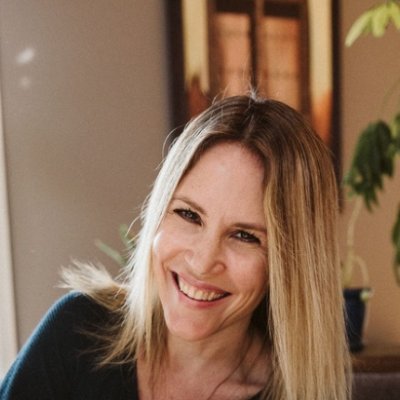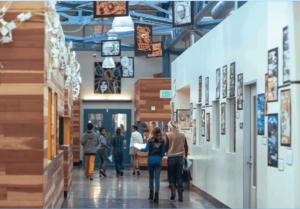30 Leaders on the Successes and Challenges of Project-Based Learning

Together with colleagues at the Buck Institute for Education (BIE), the team at Getting Smart is working to support high-quality project-based learning (PBL).
We asked learning experts what’s working in PBL and what needs to improve. We surveyed teachers, principals, superintendents, parents, and nonprofit and foundation executives that support high-quality projects in schools and districts.
We’ve already heard from 35 leaders on the successes and challenges of PBL, so here are the ideas and opinions of 30 more education and learning leaders on effective PBL implementation, what is working and what needs to improve.
How is PBL Implemented Effectively? What’s Working with PBL?
Aaron Brengard (@brengard), Katherine Smith Elementary School: “PBL implementation relies on the adult mirroring the practices and expectations that are put on the students. If students are going to collaborate, so should the adults. If driving questions and inquiry guide instruction, they need to develop the professional development.”
Amber Chandler (@MsAmberChandler), ELA Middle School Teacher: ‘Teachers who implement PBL recognize that project-based learning creates a supportive environment which fosters the whole child–academic, social and emotional. PBL is implemented effectively when there is a culture of collaboration and respect for student interest, strengths and passions. You don’t “do PBL,” but rather create an environment where facilitation can occur.”
 Antero Garcia (@anterobot), Stanford Graduate School of Education: “Choice, adaptability and responsiveness to contextual needs and interests of participants are pushing effective PBL implementation.”
Antero Garcia (@anterobot), Stanford Graduate School of Education: “Choice, adaptability and responsiveness to contextual needs and interests of participants are pushing effective PBL implementation.”
April Miller, MBA Research and Curriculum Center: “As a curriculum designer who also provides PBL training to teachers, I believe that effective PBL involves a variety of components, all working in tandem. Top on this list of components are an emphasis on content standards, a strong driving question, student voice and choice, and an authentic audience such as business professionals and/or members of the local community.”
Carrie Bakken, Avalon School: “PBL works best when it starts with student interest first, and students are the drivers of the projects.”
Curt Allen (@CurtAllen), Agilix: “By a motivated team of educators, parents, and students — with high-quality project templates, delivered through a purpose-built Personalized PBL platform that provides real-time visibility into student agency, ownership, growth and improved learning outcomes.”
Erin Murphy (@murphysmusings5), East Penn School District: “PBL works when the instructor finds the balance between student-centered problem solving and productive struggle, mini-lessons and authentic audiences.”
 Max Silverman (@MaxSilverman), UWCEL: “PBL is implemented effectively when students have access to authentic projects and supportive teaching and technology to produce high-quality work.”
Max Silverman (@MaxSilverman), UWCEL: “PBL is implemented effectively when students have access to authentic projects and supportive teaching and technology to produce high-quality work.”
Michelle Cahill, National Center for Civic Innovation: ”When it is designed to engage students deeply in learning concepts, content and practices in academic domains and developing skills and attributes such as problem-solving, decision-making, curiosity and confidence through investigating problems, creating products, or in other ways creating projects that can be assessed for demonstration of this knowledge, skills and attributes. Effectively implemented it requires a professional learning community, smart uses of technology and sophisticated partnerships with workforce, community and cultural organizations.”
Riley Johnson (@rmjohnson45), New Technology High School: “PBL is implemented effectively when we are examining the intersection of context and authenticity. Using Adria Steinberg’s 6 A’s has played a vital role in helping shape and evaluate the quality of PBL implementation.”
Roger Weissberg (@RogerWeissberg), CASEL: “Integrating social and emotional learning (SEL) with PBL.”
Rosie Clayton (@RosieClayton), education consultant: “I would say four main things, from a U.K. perspective: Community (including at policy level) understandings of project-based learning and school redesign – including evidence of how PBL can improve outcomes for all students, within the parameters of the English accountability system and support progression. Teacher training and capacity building across the profession. Ability and/or desire to take risk at a school leadership and governance level (including building a community of risk takers prepared to support each other). Creating spaces for dialogue and connectivity around PBL, including drawing in wider professions and sectors, potentially through technology [such as] digital or virtual spaces.”
Ross Cooper (@RossCoops31), Salisbury Township School District: “PBL is implemented effectively when we show educators that it’s not a pie in the sky initiative, but rather a bunch of best practices that have been strung together: essential questions, student-created rubrics, effective feedback, student reflection, etc.”
Sheila Valencia, University of Washington: “PBL is effective when projects require students to acquire new knowledge and skills and to apply them in meaningful project work under the guidance of a teacher who has deep content knowledge and pedagogical strategies to facilitate that work.”
Virgel Hammonds (@virgelhammonds), KnowledgeWorks: “Including all stakeholders in the design process is important. But including learners from the start, before implementation, is vital.”
Walter Parker, University of Washington: “Effective PBL is aimed squarely at core academic learning goals. There are real-world connections, but these are aimed at powerful conceptual knowledge. This is knowledge that transfers, predicts, illuminates, liberates and continues to grow.”
What Needs To Improve?
Christopher Pupik Dean (@cpupikdean), Penn Residency Master’s in Teaching, UPenn Graduate School of Education: “We believe strongly that teacher education and teacher professional development need to focus on supporting teachers to cultivate the core practices of the work of teaching – particularly around enactment in classrooms (where past work has been to focused on planning and adaptation, which, though very important, do not cover the entire spectrum of the work of teaching).”
David Young (@Dyvif), VIF: “Using PBL in teacher professional development models [shows them] what we want them to do with their students. To transform student learning we must transform teacher practices. To transform teacher practices, we must transform teacher learning. That should be done via PBL.”
Jason Lange (@jasonclange), Bloomboard: “PBL is most effectively implemented when the outputs are well-defined and when the projects are well-aligned to specific sets of competencies. The clear need for competency-based learning is helping accelerate the movement towards high-quality PBL and it’s exciting to see the overlap.”
 Jessie Woolley-Wilson (@jessieww), DreamBox Learning: “We need to showcase where PBL works and why. What are the conditions for success where it is working? How do learning guardians engage? How do students participate in PBL? What are the roles of teachers and students with effective PBL?”
Jessie Woolley-Wilson (@jessieww), DreamBox Learning: “We need to showcase where PBL works and why. What are the conditions for success where it is working? How do learning guardians engage? How do students participate in PBL? What are the roles of teachers and students with effective PBL?”
Jim May (@jimamay), New Tech Network: “The support of novice teachers working to learn and implement PBL, particularly in contexts where students have acute knowledge and skill gaps, needs better tools and resources that support both project design and project facilitation. Many resources exist to support the project design phase, but by comparison relatively few tools/resources support the work of facilitation, which is just as crucial to quality PBL. Moreover, for tools and resources to be effective at supporting novice teachers the level of detailed articulation required is very high. Generally speaking, the PBL community has not been consistently effective in supporting this population of teachers in reaching quality project-based learning.”
Joe Thomas (@EvalJAUSA), Junior Achievement: “A student-centered pedagogy is only as effective as the students are engaged psychologically (e.g., motivation and interest) and are provided meaningful and relevant real-world challenges. Sometimes, very clever scenarios (from the curriculum development perspective) are not effective because they don’t match students’ expectations or frameworks.”
Julie Keane, (@juliekeane), VIF: “A policy environment that is shifting back to a focus on PBL in the classroom. This includes new language in the ESSA federal guidelines will be helpful in supporting a pivot towards high-quality PBL and less testing that has been such a barrier to implementation.”
Kelly Wilson (@kwilsonhth), High Tech High Graduate School of Education: “More now than ever, teachers, administrators and district leaders are hungry to try PBL and get better at it. Projects can fall flat when they are treated as an ‘add on’ at the end of a traditional unit, students have little voice and choice to shape their learning, and rather than an authentic audience and exhibition for the final product or presentation, the work is submitted to the teacher for a grade. Having an authentic purpose and audience for the work, cultivates intrinsic curiosity in students and motivation to create beautiful work through multiple rounds of critique and revision.”
Margot Rogers (@mmrogersVA), Parthenon-EY: “Designing meaningful, engaging, challenging projects is not easy. Teachers, at scale, need support to create or access such projects. They also need help understanding how this kind of work builds off of (or doesn’t) the standards they are expected to help students master. In the short term, the work likely needs to nest within, or at least pivot off of, what teachers are expected to do.”
Mary Catherine (MC) Desrosiers (@MaryCDesrosiers), Junior Achievement: “Students need choice in their projects, work yields better engagement and higher interest and success. Educators and volunteers need to know how to facilitate and mentor, rather than tell. Students need to see the connection between their project work as a real-world, authentic task and buy into the project.”
 Michael Soguero (@tiomikel), Eagle Rock Professional Development Center: “Professional development to support teachers is our greatest need. It’s important to scaffold what is expected of teachers as much as it is of students.”
Michael Soguero (@tiomikel), Eagle Rock Professional Development Center: “Professional development to support teachers is our greatest need. It’s important to scaffold what is expected of teachers as much as it is of students.”
Shannon Buerk (@ShannonKBuerk), engage2learn: “Educators have to be discriminating about the purpose for which they are implementing PBL. If it is just another strategy in the toolbox for Fridays or at the end of a unit or when they have time, it will not work. If you exercise once a month, it is painful every time. On the other hand, if PBL is THE instructional model, then there is the opportunity to change the culture because learners and educators both gain the new skills required to shift from a teaching platform to a learning platform. Fidelity only comes with frequency and true change in behavior/practice which requires job-embedded coaching. All learning service providers for any significant instructional shift like PBL should refuse, like we do, to provide training without coaching. Training without coaching just perpetuates poor quality and spotty implementations which are worse actually than not trying at all because the results give learning platforms like PBL a bad name and give ammunition to opponents of this shift.”
Tony Wan (@tonywan), EdSurge: “Training and development for teachers, and empowering them to have greater flexibility about how to conduct PBL exercises.”
The High-Quality PBL Advisory Team
The High-Quality PBL Advisory Team includes those listed above and additional people we’ve quoted in a previous blog post here. They are:
Andrew Rothstein, NAF
Bailey Thomson (@baileythomson), SPARK Schools
Chris Lehmann (@chrislehmann), Science Leadership Academy
Chris Sturgis (@sturgis_chris), Competency Works
David Conley (@drdavidtconley), EdImagine
Jaime Casap (@jcasap), Google
James Campbell (@therealjamcam), Mount Vernon Presbyterian School
Karla Phillips (@azkarla), Foundation for Excellence in Education
Michael Golden (@Educurious), Educurious
Dr. Michael J. Martirano (@mjmsuper), West Virginia Department of Education
Nicole Assisi (@thriveps), Thrive Public Schools
Ray Pecheone (@Stanford_SCALE), Stanford SCALE
Shane Krukowski (@pblhq), Project Foundry
Susan Enfield (@Suptenfield), Highline Public Schools
Tommy Chang (@SuptChang), Boston Public Schools
Tom Vander Ark (@TVanderArk), Getting Smart
Andy Calkins (@andrewcalkins), NGLC
Annette Diefenthaler (@annette_di), IDEO
Blossom Johnston, Albertson Family Foundation
Ben Kornell (@benkornell), Envision Schools
Burak Yilmaz (@HarmonyEdu), Harmony Public Schools
Corey Scholes (@AKASMOM), Kauffman Foundation
David Ruff (@GSPDavid), Great Schools Partnership
David Ross (@davidPBLross), Partnership for 21st Century Learning
Eric Sheninger (@E_Sheninger), author of Digital Leadership
Emily Hassel, Public Impact
Juan Cabrera (@jecabrera), El Paso Independent School District
Maria Langworthy, Microsoft
Mari Ullman (@MariUllmann), World Federation of United Nations Associations
Ron Berger (@RonBergerEL), EL Education
Scott Benson (@scottb_edu), New School Venture Fund
Shawn Rubin (@shawncrubin), Highlander Institute
Thea Sahr (@TheaSahr), DiscoverE
Tom Murray (@thomascmurray), Future Ready Schools
Tony Wagner (@drtonywagner), Harvard Innovation Lab
(There are also additional steering committee team members from other organizations including the Buck Institute for Education (BIE) and Getting Smart).
Call to Action
Share your ideas about what’s working and what could improve with #PBL, @Getting_Smart and @BIEpbl. We are also accepting guest blogs about high-quality PBL. Please email [email protected] with the title PBL to submit a post and see our guest posting policies.
For more, see:
- What We are Doing to Ensure High-Quality PBL for All
- It’s a Project-Based World. Let’s Prepare Students for It
- 35 Leaders on the Successes and Challenges of Project-Based Learning
This blog is part of the High-Quality PBL project. This project is supported by Project Management Institute Educational Foundation (PMIEF) and the William and Flora Hewlett Foundation. For more, see www.BIE.org and follow @BIEpbl for all the latest news and resources on high-quality project-based learning and use hashtag #PBL.
Stay in-the-know with all things EdTech and innovations in learning by signing up to receive the weekly Smart Update. This post includes mentions of a Getting Smart partner. For a full list of partners, affiliate organizations and all other disclosures please see our Partner page.






0 Comments
Leave a Comment
Your email address will not be published. All fields are required.